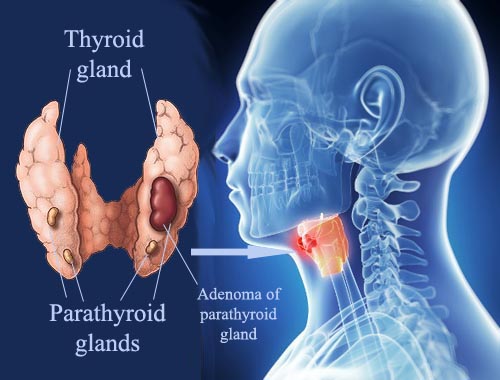Hyperparathyroidism
Hyperparathyroidism is a disorder in which the parathyroid glands in your neck produce too much parathyroid hormone (PTH). The parathyroid glands are located in the neck, near or attached to the back side of the thyroid gland. They produce parathyroid hormone. This hormone controls calcium, phosphorus, and vitamin D levels in the blood and bone. When calcium levels are too low, the body responds by making more parathyroid hormone. This hormone causes calcium levels in the blood to rise, as more calcium is taken from the bone and reabsorbed by the intestines and kidney. Normal serum intact PTH in the setting of hypercalcemia does not rule out disease. Depression, cognitive changes, change in sleep pattern, and myalgias are common subjective complaints. There may be a history of nephrolithiasis or low bone mineral density. Physical examination is usually normal, but examination of the neck is essential to look for a hard, dense mass, suggestive of parathyroid carcinoma. Complications of surgery are uncommon but include hypocalcemia, injury to the recurrent laryngeal nerve, bleeding, and pneumothorax. Localization studies are performed preoperatively to locate the abnormal tissue such that a directed, minimally invasive parathyroidectomy can be performed. Intraoperative assessment of serum intact PTH is a useful guide to confirm adequacy of resection. Parathyroidectomy is the only definitive cure. Monitoring is an option for patients who have mild hypercalcemia without surgical indications such as younger age, lack of ensured follow-up, impaired renal function, or osteoporosis.
